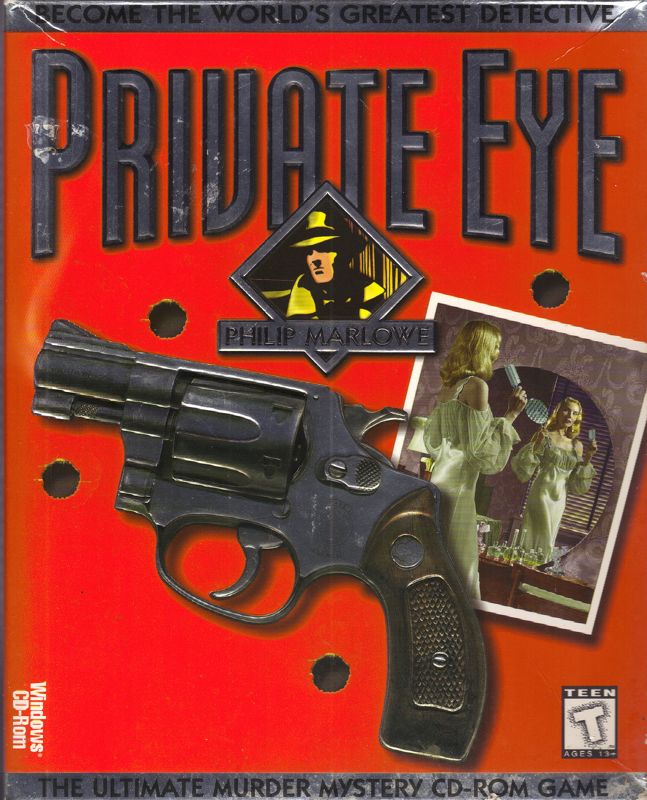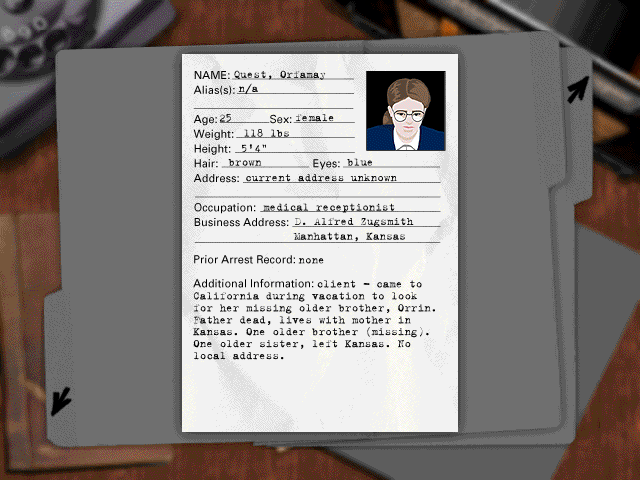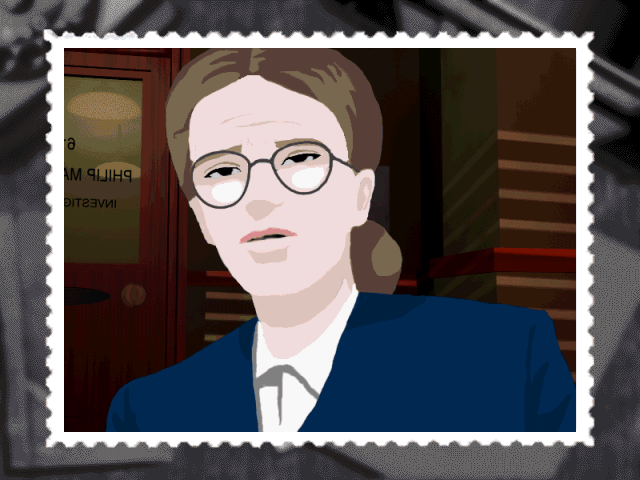Retro Replay Review
Gameplay
Private Eye unfolds more like an interactive movie than a conventional game, placing you directly in the trench coat of iconic detective Phillip Marlowe. Your role is to guide Marlowe through a web of shady back-alley meetups, tense confrontations, and puzzle-like investigations. Rather than offering free-roaming environments, the gameplay hinges on carefully timed choices and light puzzle solving, emphasizing narrative flow over traditional exploration.
(HEY YOU!! We hope you enjoy! We try not to run ads. So basically, this is a very expensive hobby running this site. Please consider joining us for updates, forums, and more. Network w/ us to make some cash or friends while retro gaming, and you can win some free retro games for posting. Okay, carry on 👍)
Throughout each scene, you’ll select dialogue options, examine objects, and trigger quick-time events that steer the story’s direction. The game’s pacing ensures that these interjections never feel arbitrary: every decision or clue you uncover has immediate bearing on relationships with suspects and informants. This approach demands attention to detail—overlook a key item or choose the wrong response, and crucial information may slip through your fingers.
Alternate endings add a layer of replay value. Depending on the evidence you gather and the suspects you confront, Marlowe’s fate and the mystery’s resolution can vary significantly. Players looking to experience every possible twist will find themselves replaying chapters to unlock hidden responses or subtly different cut-scenes, making each session feel fresh.
For fans of classic point-and-click adventures, Private Eye’s minimalistic controls are intuitive. Rather than juggling an inventory or mastering complex mechanics, you focus almost entirely on character interactions and narrative branching. While this may feel limiting to action-oriented gamers, the streamlined experience is precisely what amplifies the game’s cinematic atmosphere.
Graphics
Visually, Private Eye employs cel animation techniques reminiscent of titles like Oni, giving it a stylized, hand-drawn look that perfectly suits its 1940s setting. Each frame feels like a still from a noir graphic novel, with sharp silhouettes, deep shadows, and carefully placed highlights. This distinctive art style elevates the moody atmosphere and reinforces the game’s period authenticity.
Backgrounds are richly detailed, capturing smoky bars, rain-slicked streets, and opulent penthouse apartments. These environments serve not only as eye candy but also as subtle clue repositories—faded newspaper clippings or dusty photograph frames provide context for your investigation. The animation is smooth during dialogue and cut-scenes, with character movements exuding just the right amount of noir-era flair.
Character designs strike a fine balance between realism and stylization. Marlowe himself is rendered with a serious brow and sharply cut features, projecting the hard-boiled persona you’d expect. Supporting cast members—from sultry lounge singers to jittery informants—each boast distinct silhouettes and expressive faces that convey mood even without dialogue.
Lighting and color palettes are deliberately muted, favoring dusky blues, sepia tones, and stark black contrasts. This choice underscores the genre’s themes of moral ambiguity and hidden truths. Occasional splashes of reds or golds—like the glow of a neon sign or the glint of a revolver—draw your eye to critical details and heighten dramatic tension.
Story
Drawing inspiration from the works of Raymond Chandler, Private Eye weaves a tightly plotted murder mystery that feels right at home in Marlowe’s world. The narrative opens with a cryptic phone call, plunging you into a labyrinth of double-crosses, stolen jewels, and corrupt power players. Chandler’s trademark wit and cynical humor pepper the script, ensuring that each line of dialogue lands with style.
Voice acting is a standout feature, with Phillip Marlowe’s baritone narration guiding you through twisting alleys and smoky nightclubs. The cast breathes life into every character—from femme fatales to crooked detectives—creating an immersive experience that transcends mere text boxes. You’ll find yourself anticipating each exchange, as the voice performances add texture to the game’s dialogue-heavy structure.
As you piece together clues, the plot branches in meaningful ways. Your choices determine which leads you chase and which allies you make—or betray. This structure cleverly mirrors the unpredictability of real investigations: one misstep can derail your progress, while a well-timed insight can unlock entire subplots. The presence of multiple endings reinforces that no two playthroughs will be identical.
Musical cues further ground the story in the 1940s. Jazzy saxophones underscore tense stakeouts, while melancholy piano riffs accompany moments of reflection. The score never overwhelms conversation but instead complements it, transporting you back to an era of cigarette smoke and whispered secrets.
Overall Experience
Private Eye offers a uniquely cinematic adventure that will especially appeal to fans of noir fiction and interactive storytelling. Its focus on narrative choice, atmospheric visuals, and period-authentic audio design creates a holistic experience that feels both polished and engrossing. If you’ve ever dreamed of stepping into the shoes of a classic gumshoe, this title delivers on every front.
That said, the game’s limited interactivity and linear progression may not satisfy those seeking traditional action or open-world exploration. The emphasis is squarely on story and mood, so players who prioritize tight gameplay mechanics over narrative immersion might find it slow at times. However, for those willing to surrender to its film-like pacing, Private Eye is a masterclass in interactive noir.
Replayability hinges on your willingness to delve into alternative decision paths. The branching narrative encourages experimentation, rewarding curious players with hidden cut-scenes and surprising revelations. Even after uncovering one resolution, the game still holds back secrets that beckon you to return.
In sum, Private Eye stands out as an ambitious fusion of animation, voice acting, and detective intrigue. Its commitment to authenticity—through Chandler-inspired writing, cel animation, and period music—makes for a memorable gaming experience. Whether you’re a mystery aficionado or simply seeking a stylish departure from the norm, Marlowe’s next case is well worth investigating.
 Retro Replay Retro Replay gaming reviews, news, emulation, geek stuff and more!
Retro Replay Retro Replay gaming reviews, news, emulation, geek stuff and more!









Reviews
There are no reviews yet.